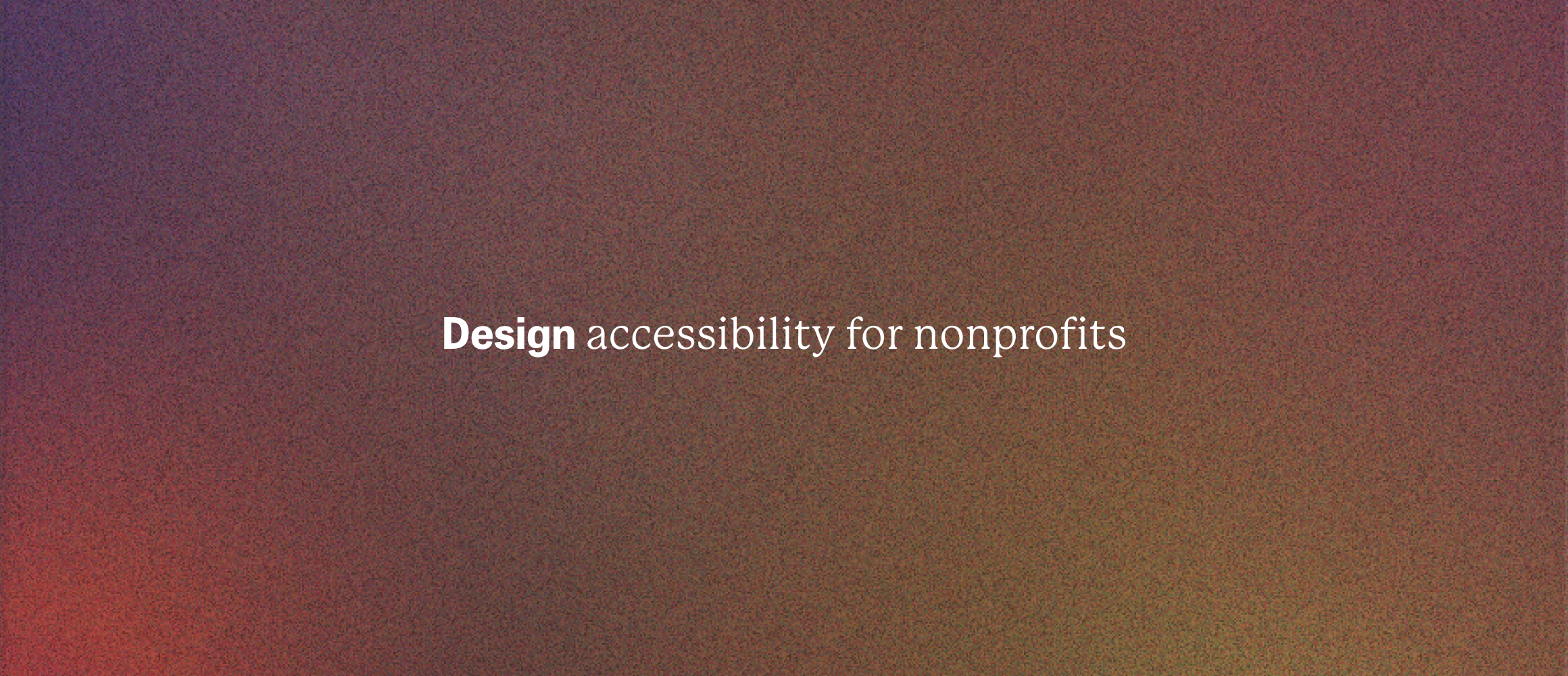This blog is part of a three-part Design Accessibility for Nonprofit Brands series. Check out parts two and three: How to design an accessible color palette and How to create accessible typography. Do you have a branding project in mind? We’d love to hear about it.
As a nonprofit, you likely understand the importance of inclusivity. You strive to apply this value not only to how your organization functions internally, but also to the public face of your brand.
You may have heard that design accessibility is an important part of building an inclusive visual identity, but what does it entail?
1. Design accessibility for a brand, defined
Accessibility supports inclusivity. A brand’s visual identity should be designed so that individuals who have color vision deficiency (CVD), low-vision, or blindness, or who rely on assistive technologies, are able to access (and, hopefully, enjoy) the creative work.
When we develop a visual identity for a brand (i.e. designing a logo, color palette, typography, and imagery treatments, etc.) a lot of thoughtful, strategic and design research shapes the final product. Testing for accessibility is a crucial part of that research. No brand is complete without ensuring its visuals will meet high standards of accessibility when applied across print, digital, spatial, and motion design.
2. Guidance for design accessibility
Luckily, accessibility guidelines are freely available online, as are tools that help test compliance with accessibility standards (check out How to design an accessible color palette for some recommendations).
At Radish Lab, we design visual identities that will be accessible in digital spaces. Therefore, the accessibility guidelines we rely on the most are WCAG Level A+AA, and WAI-ARIA.
- WCAG (Web Content Accessibility Guidelines) Level A+AA guidelines offer testable standards to ensure that web content is accessible to people with disabilities, ensuring that content is perceivable, understandable, operable, and robust.
- WAI-ARIA (Web Accessibility Initiative – Accessible Rich Internet Applications) provides guidelines that ensure websites are accessible to those users who rely on assistive technologies, such as users who cannot use a mouse, or who use screen readers.
If you’re taking on the task of making sure your organization’s visual identity meets your high standards of inclusivity, these protocols provide clear guardrails for building an accessible brand.
3. Where accessibility shows up in brand identity
In this series, we’ll hone in on accessibility guidelines governing two key elements of your nonprofit brand: color and typography.
We’ll highlight a few key requirements that you can apply early in the design process, so that you can avoid disruptive changes to your brand’s visual identity when you transition it to digital spaces.
Ready for next steps? Check out the next blog in our Design Accessibility for Nonprofit Brands seriesfor more on design accessibility guidelines for color palette.
